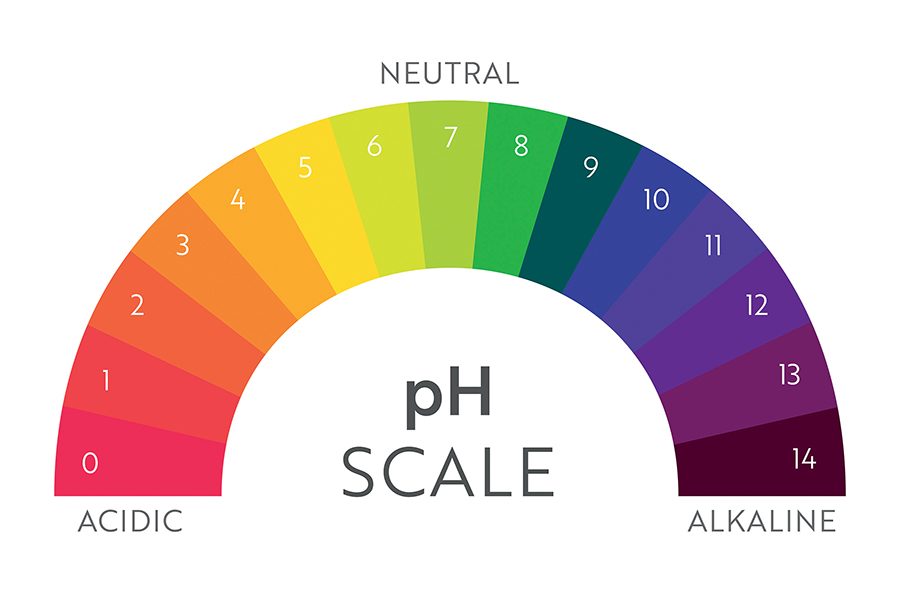Measuring and managing acidity in wine
4th September 2024
The crispness or tartness of wine is dictated in part by its acidity. Winemakers use the acidity levels along with Brix to make decisions about harvest time and the need for acidity adjustments, in order to achieve wine stability and quality.

“Acidity is one of the structural cornerstones in wine,” says Defined Wine’s head winemaker, Nick Lane. “Wine grapes distinguish themselves from other fruit by potentially having both high acidity levels and high levels of sugar. Managing acidity in wine is a crucial aspect of making quality wines with good balance.”
Nick goes on to explain that the principal acids in wine are tartaric and malic, with lesser amounts of citric.
“In the cool climatic conditions of the grape growing regions of the UK, acidity levels are typically very high. Although these high acidity levels can be a useful structural component and a distinguishing feature, they can also result in wines that are out of balance,” he points out.
So, how do winemakers reduce acidity? “There are two fundamental ways in the winery that this acidity can be managed downwards,” says Nick. “The first is by using malolactic bacteria that convert malic acid (with two acid functions) into lactic acid (with a single acidic function). This method is favoured by winemakers as it can also result in enhancing other flavours and textures in the wine.
“The second method is by removing acidity chemically. The addition of potassium bicarbonate (essentially the same as baking soda) is actually a simple and gentle way of removing a specific amount of tartaric acid.”
As already mentioned, acidity levels within UK-grown grapes are more likely to be on the higher side, compared to those grown on the continent or further afield, so the above two methods involve the lowering of acidity.
However, as Nick points out, even in the UK in the warmest years in the warmest regions, there is the possibility of acidity being too low and the need for this to be increased. “This is simply done by adding a calculated quantity of acid, usually tartaric acid,” says Nick.
“The level of acidity in the grapes is inextricably linked to the ripeness of the grapes. Various viticultural factors will influence this. As an overarching rule, any practice that increases the level of ripeness will lower the level of acidity. Direct exposure of grape bunches to sunlight is one approach to reducing the level of acidity,” Nick concludes.
Site choice and canopy management

In order for the ideal sugar and acidity levels to be reached, heat and sunlight are required. Therefore it’s vital to ensure the vines are planted in an appropriate location – with little or no shading and at not too high an altitude, as this impacts on overall temperatures.
The canopy growth itself needs to be managed in order to ensure the grapes receive enough sunlight and heat – particularly important in high vigour varieties or for well-irrigated sites with nutrient-packed soil.
Shaded canopies cause higher pH and lower tartaric acid levels, with lower sugar levels affecting the balance, therefore grape growers should aim to achieve an open canopy that is balanced between vine growth and fruit load.
Crop thinning is also important. Removing excess or crowded bunches will improve leaf area to fruit weight ratio, resulting in a higher level of quality within the overall yield.
Variety choice
Varieties grown in the UK, particularly in the more northerly or westerly regions, should be suitable for cooler climates. As such, varieties such as the sparkling/Champagne trinity have been the most popular to date and, more recently, Piwi hybrids have become a focus. As with the sparkling varieties, Piwis are usually more vigorous than conventional varieties and have a shorter phenology, so the fruit is quicker to mature during shorter or cooler summers.
Similarly, clone and rootstock choice can impact on vine vigour so should also be taken into consideration when planning a vineyard.
Grape maturity and harvest time
The concentrations of malic and tartaric acid increases up until veraison, at which point tartaric acid concentration usually stabilises.
However, at the same time, malic acid concentration begins to reduce as it is metabolised to form sugars inside the grape. The higher the temperature, the faster this process occurs – therefore in the cooler UK climate it’s the malic acid which typically raises the overall acidity.
Determining a harvest date is usually decided between the grower and winemaker after assessing grape samples and considering the likely temperatures during the day and overnight over subsequent weeks.
If acidity and sugar content is uneven across the vineyard, one strategy could be to harvest small sections at different times and blend the juices back together later in the winery to achieve a balanced finish.
Read more vine news
